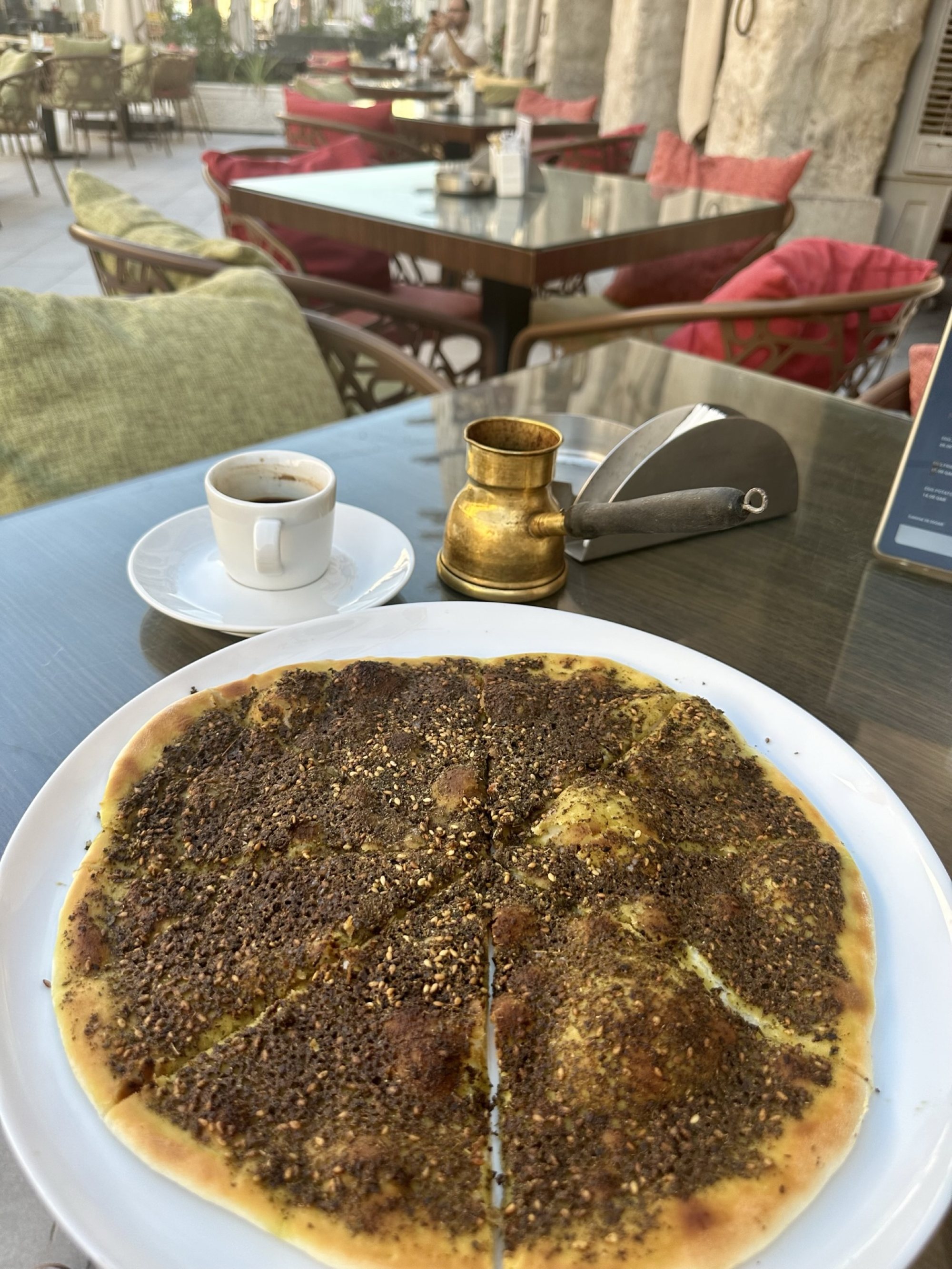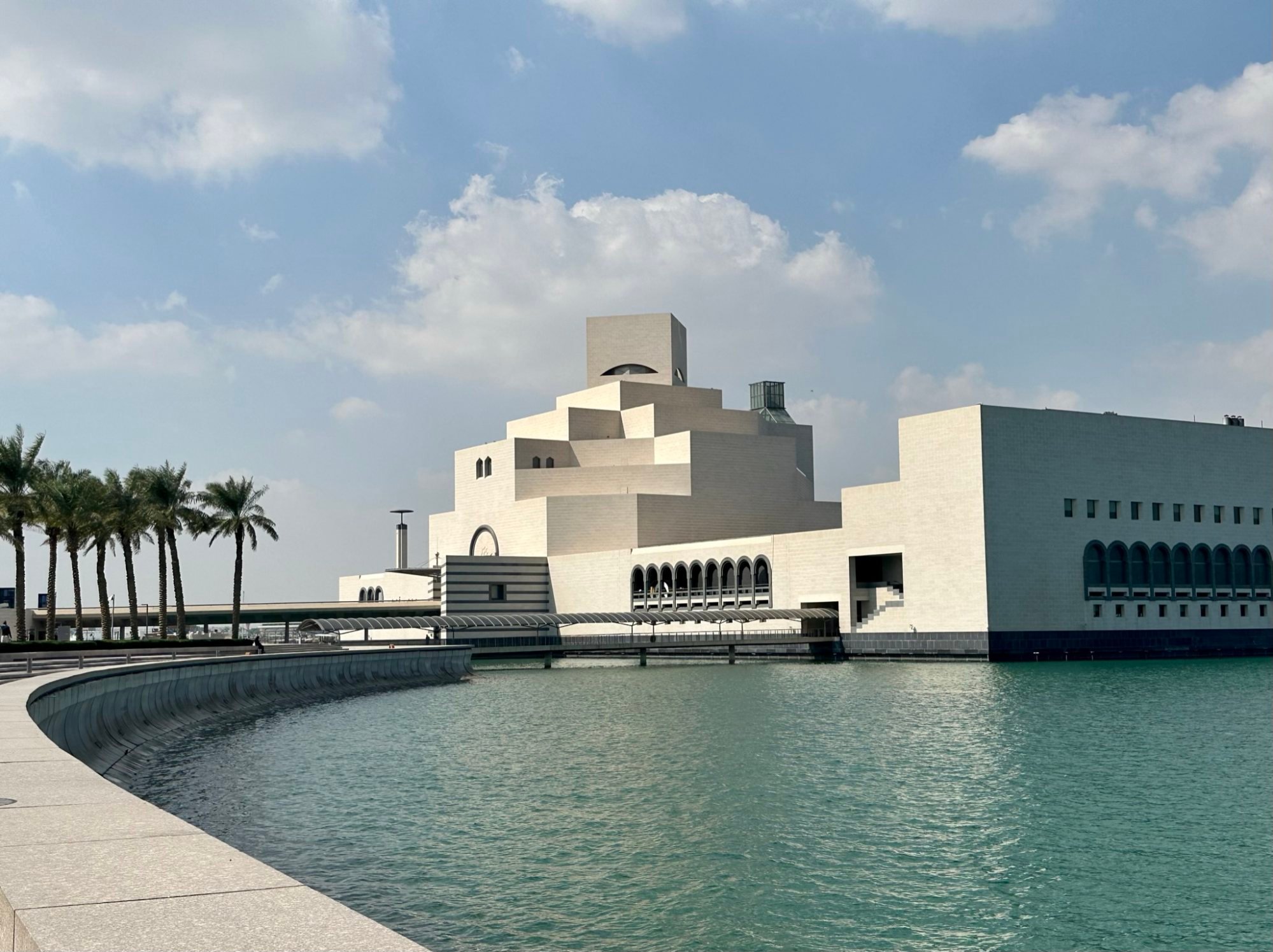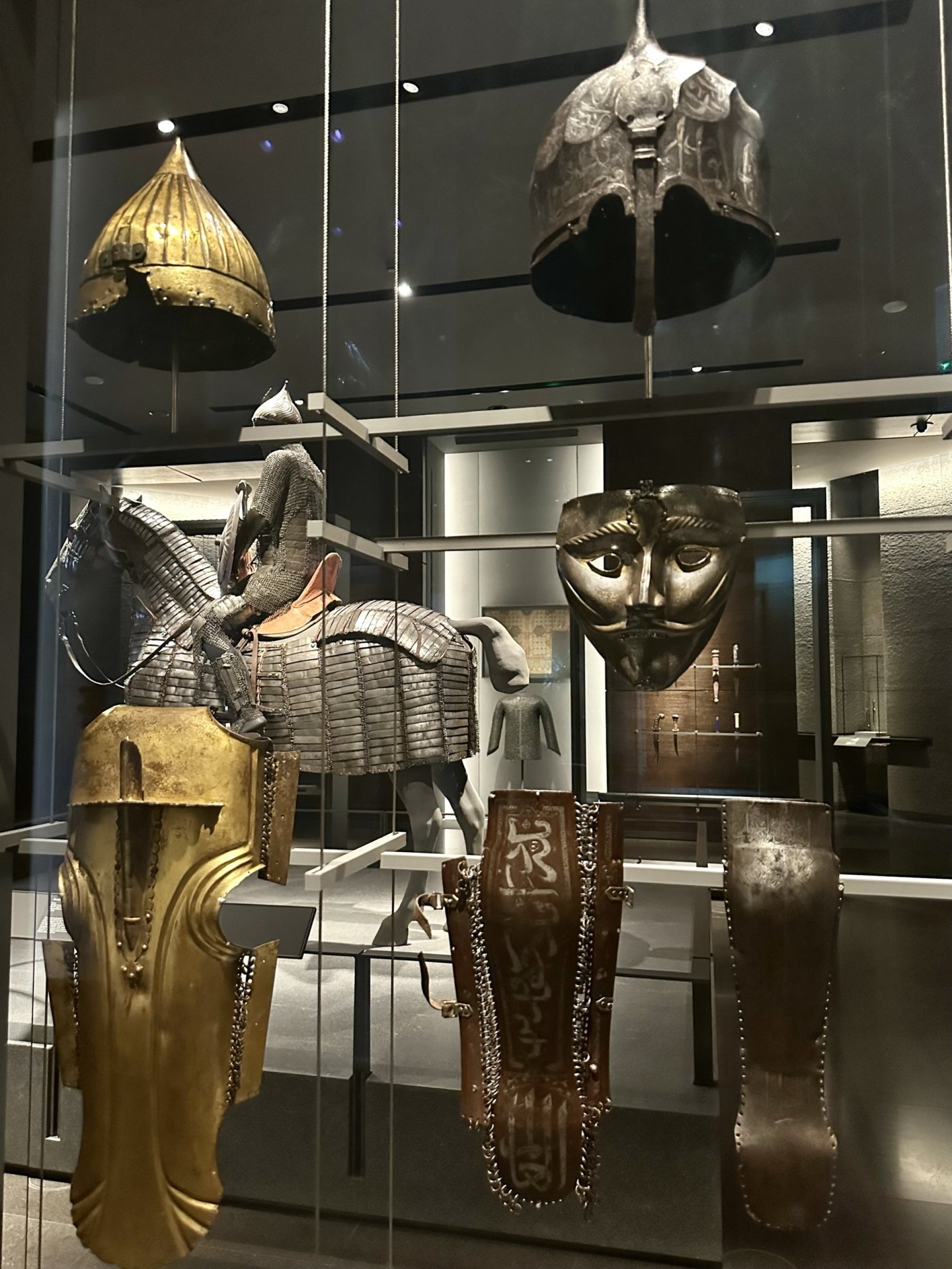
Doha stopover: what to see in the Qatari capital – falcons and world-class museums – what to eat and things to do, such as paddle boarding
- Doha in Qatar offers a trove of Middle Eastern culture, from its falconry and souks to museums featuring Islamic art and local artefacts
- A single woman shares her experience of a two-night stopover in the city, sampling the food and soaking up its ancient-meets-modern culture
Rows of falcons perch on railings, the eye-covering leather hoods around their heads giving the birds the look of blind medieval knights with talons instead of swords.
Except for a few black-covered wives accompanying their husbands, I am the only woman here, but when I enter one of the shops during feeding time and ask if I can photograph the falcons, both the storekeepers and customers are surprisingly accommodating.
Brightly coloured leashes, falconry gloves and short pedestals line the shop’s perimeter.

In the middle, rows of short, narrow walls covered with bright green strips of AstroTurf stand in a giant sandpit and act as perches for a dozen tethered falcons.
A man in a long, sand-coloured thobe brings in a white dish of raw chicken legs, which he hand-feeds to the birds. They anchor their meal with their talons and tuck in.

A big, unhooded falcon in the front row stares right at me. I imagine for a moment that, if it weren’t for the tie binding its foot to the perch, it would skip the drumstick and go for my heart.
Doha blends futuristic architecture and a cosmopolitan population with glimpses into Middle Eastern culture.
Qatar Airways’ stopover programme allows passengers connecting in Doha to get a taste of this culture by staying for between one and four nights without an increase in ticket price. I stop for two nights en route to the Maldives, and wish I was staying for longer.
Dune bashing, bazaar shopping: things to do in Doha on a stopover
My accommodation is at the Aramaila, the closest of Souk Waqif’s boutique hotels to the taxi drop-off, and an inexpensive 15-minute ride from the airport. Getting lost in the labyrinthine, pedestrian-only souk is fun, but not while hauling luggage.
Many sources claim that this immense shopping centre is a century old, while others trace its origins back 250 years. Either way, the trade here in goats, wood, turmeric, fish, cumin and other goods was declining by 2000, because of modern shopping centres. But the then emir, Sheikh Hamad bin Khalifah al Thani, recognised the souk’s architectural and historical importance, and in 2006, funded its reconstruction.
Now Qataris and tourists rub shoulders in the souk’s cobbled lanes, strolling between whitewashed buildings with exposed timber beams and mud-rendered walls. A spicy curry smell hangs in the air and cats slink along the walls.

Exploring the souk, you never know what’s around the next corner – it could be pet stalls selling chirping birds and sleepy kittens (Scottish folds are trending), a tout offering camel rides – or a giant golden thumb.
I leave the whisper-quiet souk at 7am to walk the Corniche before the temperature rises to its full 30+ degrees Celsius (86+ degrees Fahrenheit).
A 36-foot (11-metre) open clamshell towers over me as I reach the Corniche, an example of the public art that dots the 7km (4-mile) promenade.

Men – foreign workers, by the looks of it, since they’re not dressed in thobes and trousers – fish from the rocks between the water and the walkway. One is putting out dishes of food for the many cats clambering over the rocks.
Doha’s skyscrapers are across the bay. Between them, beautiful wooden dhows bob at anchor.
Back at the souk, I find 24-hour restaurant Khariss Caffe. Only one of its many outdoor tables is occupied at this hour, so I settle in among the red-cushioned chairs with a Turkish coffee, a mint lemonade and a manakish – a hot flatbread with a thick layer of za’atar spice – to watch the market wake up.

Then it’s on to the Museum of Islamic Art, which is housed in a cream-coloured limestone building designed by I.M. Pei that has floor-to-ceiling windows overlooking Doha Bay and a curved double stairway.
Inside – complementing exhibits that trace the spread of Islam and the religion’s art throughout the Middle East and wider Asia – is a collection focused on warfare that includes coral-studded rifles and intact suits of armour for horse and rider.
Dozens of young Qatari women fill the cafe area. As I stand in line, I note the differences in their black abayas; beaded sleeves or a silvery grey thread making a subtle pattern in the material.

In the afternoon, I take a taxi to The Pearl Island. About 52,000 people live on this artificial island, and judging by the many marina slips, many of them have a boat.
In addition to restaurants and boutiques, The Pearl has the Subzero Café, in which guests in thick winter coats sip hot drinks in a minus 9 degree Celsius (16-degree Fahrenheit) room full of ice sculptures. Just slipping into the lobby for a minute is enough to cool me off before I join a Blue Pearl Experience excursion.

Later, on impulse, I take a taxi to the Katara Cultural Village, arriving in the dark to find that the complex is much larger than I expected.
I manage to miss the main attractions, such as the huge amphitheatre, the planetarium and two exquisite mosques, but I find the Arab Postal Stamp Museum, which collects stamps from 22 Arab countries and has a gallery of soccer-inspired designs from around the world.

I was worried about stopping on my own in Doha, especially with war raging in the Middle East. But aside from airport TVs beaming Al-Jazeera news reel of slain children in Gaza and a few Palestinian flags around the city, I am not aware of any tension.
Most of my interactions, though, are with foreign nationals working in Doha: hotel workers from India; paddle-board instructors from Georgia; a Syrian server; and a taxi driver from Ghana.
I was also concerned about what it would be like in Doha for a solo female traveller. I find myself asking my hotel desk staff questions such as, “Is the souk OK for ladies at night”? (The answer is yes.)
‘A gift I’d been given’: climber’s 3am epiphany and a Hong Kong high
My SUP instructor, Liz, told me that when she first moved to Doha, she covered up a lot. “But then I realised no one cares.”
However, when she leads kayak trips in mangrove swamps near the much more conservative town of Al Thakhira, about 35km north of Doha, shopkeepers politely bar entry to any of the women she’s leading whose knees or shoulders are showing, she said.
I wear long skirts, scarves and loose tops that cover my shoulders, and would encourage other women visitors to do the same, especially if travelling alone.
Doha has a reputation for being a safe city, but it’s not the norm for Qatari women to travel alone. And I already stick out like a huge gold thumb.

